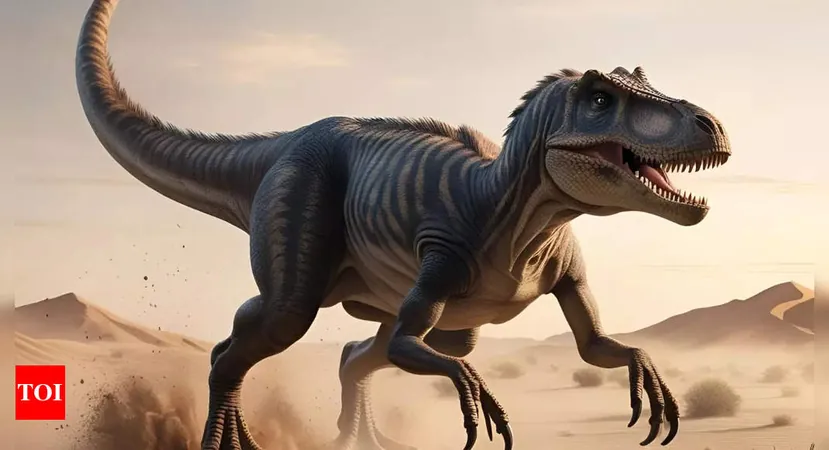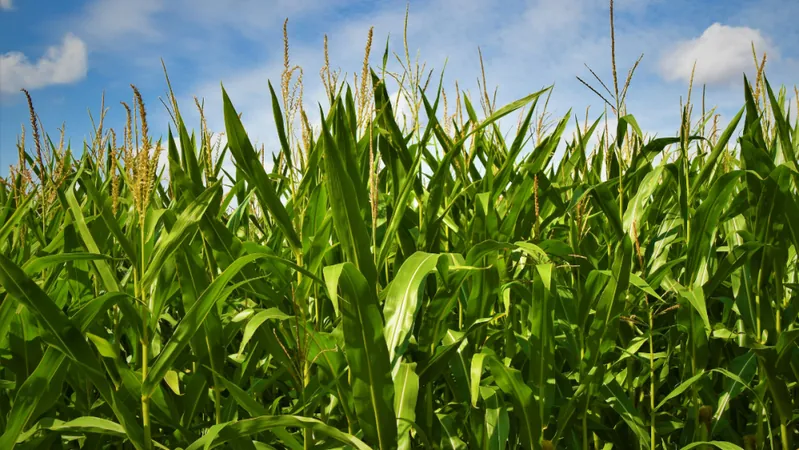
Groundbreaking Discovery: Scientists Unveil a New Dinosaur Species Comparable to Sloths!
2025-03-29
Author: Daniel
Groundbreaking Discovery of Duonychus tsogtbaatari
Researchers have made an astonishing find in Mongolia's Gobi Desert—a new species of two-clawed dinosaur named Duonychus tsogtbaatari that hails from the Late Cretaceous period, roughly 70 million years ago. This remarkable discovery could redefine our understanding of dinosaur diversity and their evolutionary adaptations.
Unique Adaptations and Significant Findings
Unlike its therizinosaur relatives that sported three claws, the Duonychus tsogtbaatari features only two long, curved claws specifically designed for grasping vegetation. This unique adaptation suggests that it had a specialized diet, likely feeding on tough plant matter similar to modern herbivorous creatures. The well-preserved fossil, weighing about 260 kg, also revealed an unprecedented keratin sheath covering the claws—an extraordinary find, as such preservation in large theropods had never before been documented. Yoshitsugu Kobayashi, palaeontologist from Hokkaido University and lead author of the study, emphasized the significance of this discovery. “No one had ever found a preserved keratin sheath from a large theropod dinosaur before,” Kobayashi stated.
Insights from the Bayanshiree Formation
The Bayanshiree formation, where this specimen was unearthed, dates back to a period teeming with diverse life forms which were subjected to significant geological and ecological changes. The discovery of the Duonychus tsogtbaatari adds to an ever-growing list of therizinosaurs, a peculiar group known for their bizarre anatomical features. Most therizinosaurs had three claws, making the existence of this two-clawed variant particularly intriguing and baffling for researchers.
Implications for Evolutionary Studies
Palaeontologist Stephan Lautenschlager from the University of Birmingham remarked on the unexpected nature of this finding: “I would not have guessed that we would see a therizinosaur with just two digits.” This observation raises fascinating questions about the evolutionary pressures and environmental factors that led to such a variation within the species.
Convergent Evolution with Modern Species
Interestingly, the unique claw configuration of the Duonychus tsogtbaatari bears resemblance to modern-day sloths, which also exhibit similar adaptations for climbing and grasping. Such findings hint at the evolutionary paths that could converge under similar environmental pressures, presenting a case study for how unrelated species can develop similar traits—an example of convergent evolution.
Looking Forward
As we continue to excavate and study fossils from one of the world's richest paleontological hotspots, the Gobi Desert, the insights gained not only deepen our understanding of dinosaur biology but also connect us to the distant past, illustrating the complexities of life on Earth.
Stay tuned for further developments in paleontological discoveries that continue to reshape our understanding of the ancient dinosaurs that once roamed our planet!


 Brasil (PT)
Brasil (PT)
 Canada (EN)
Canada (EN)
 Chile (ES)
Chile (ES)
 Česko (CS)
Česko (CS)
 대한민국 (KO)
대한민국 (KO)
 España (ES)
España (ES)
 France (FR)
France (FR)
 Hong Kong (EN)
Hong Kong (EN)
 Italia (IT)
Italia (IT)
 日本 (JA)
日本 (JA)
 Magyarország (HU)
Magyarország (HU)
 Norge (NO)
Norge (NO)
 Polska (PL)
Polska (PL)
 Schweiz (DE)
Schweiz (DE)
 Singapore (EN)
Singapore (EN)
 Sverige (SV)
Sverige (SV)
 Suomi (FI)
Suomi (FI)
 Türkiye (TR)
Türkiye (TR)
 الإمارات العربية المتحدة (AR)
الإمارات العربية المتحدة (AR)